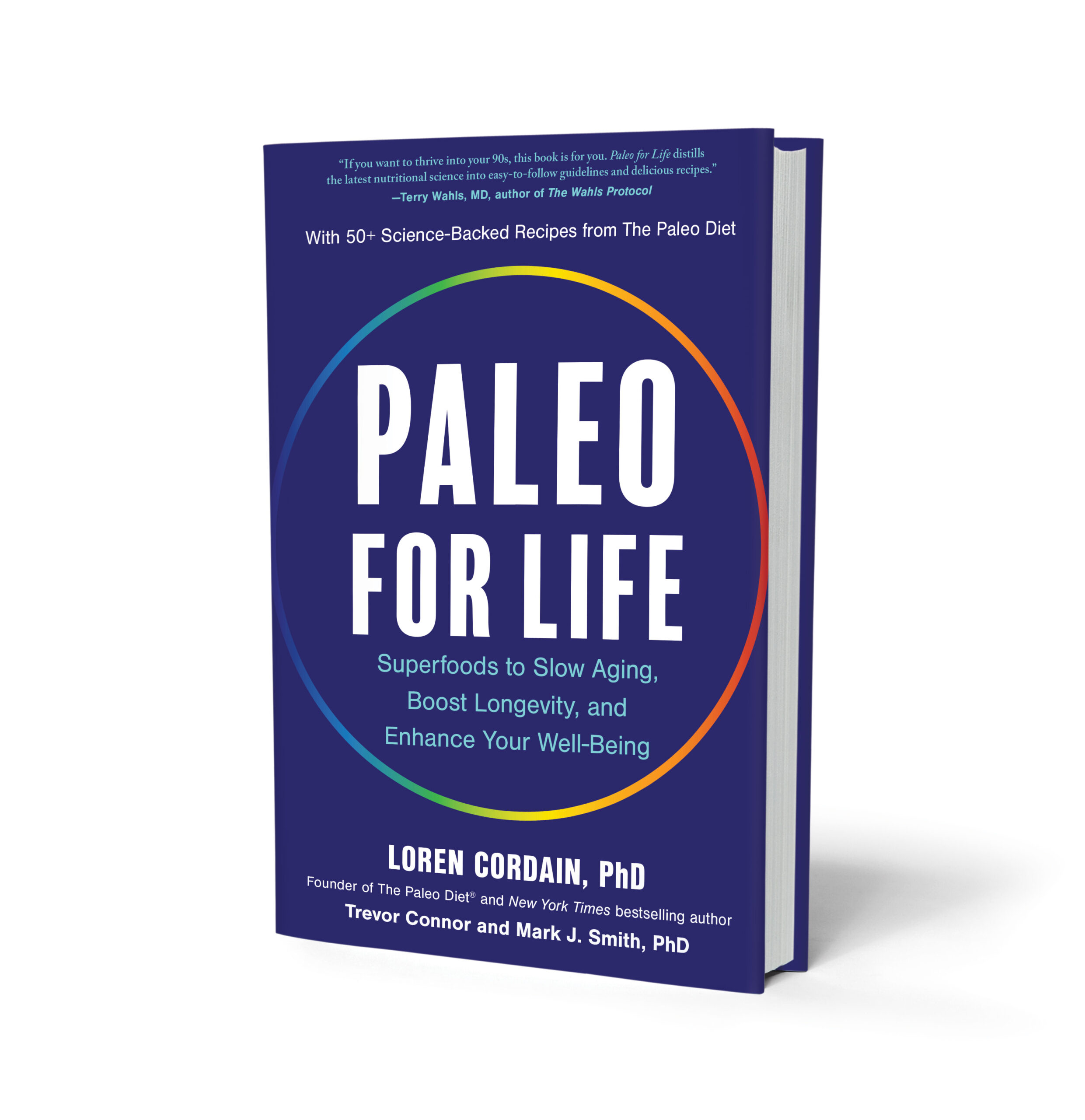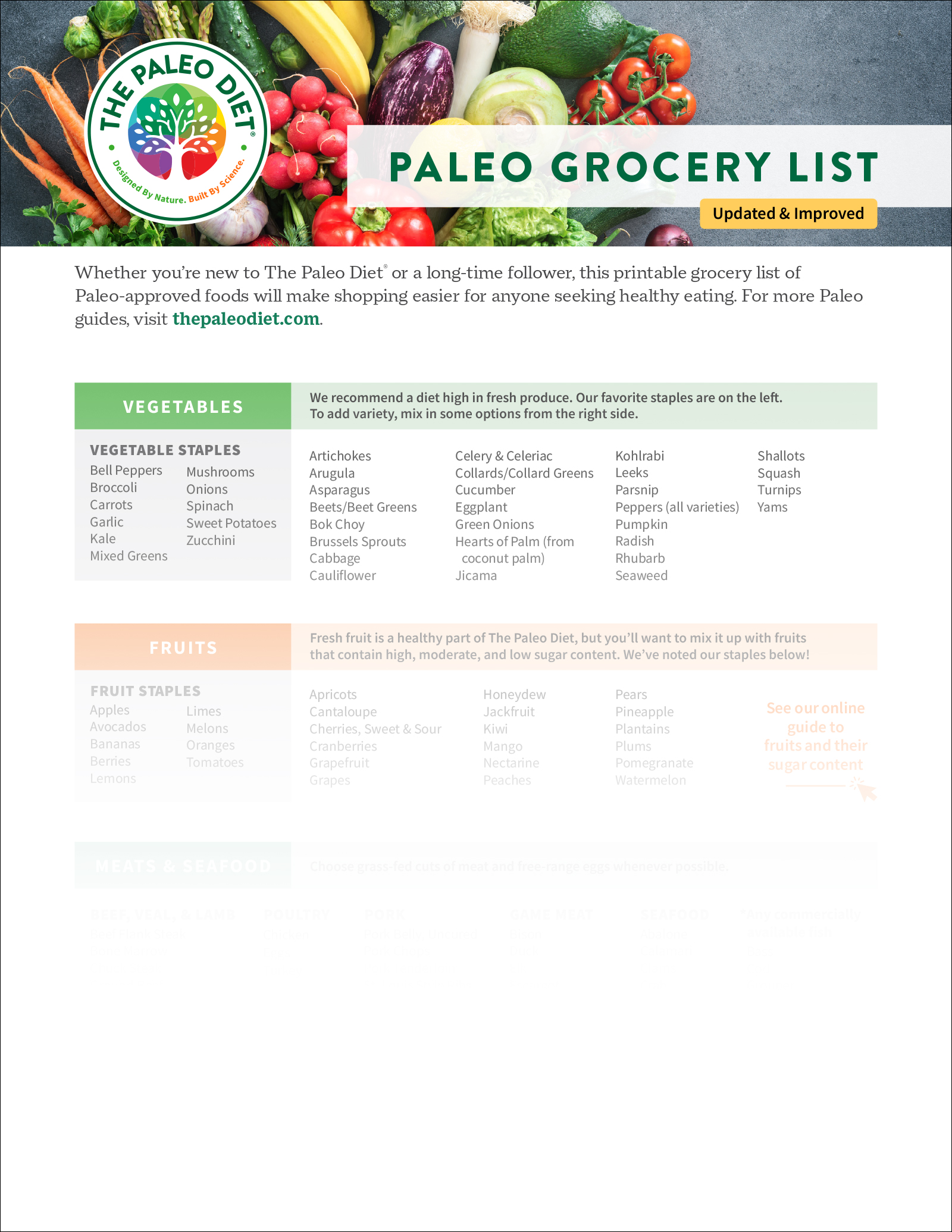Ultra-Processed Foods and Metabolic Disease

Metabolic diseases are at an all-time high—not just in the United States, but worldwide. The fact that we aren’t living or eating like our ancestors did is a big part of this. A simple walk through any grocery store reveals just how far we’ve strayed. Today, ultra-processed foods (UPFs) account for nearly 73% of the products found on American supermarket shelves. [1]
These convenience foods are now staples in the modern diet. But research shows they’re silently disrupting our core metabolic systems and fueling the rise of chronic illness.
What Are Ultra-Processed Foods?
Ultra-processed foods are defined by the Nova food classification system as foods that go through extensive industrial processing and are made with isolated food components that you wouldn’t often find in a typical home kitchen. Some common UPF ingredients may include hydrogenated oils, high-fructose corn syrup (HFCS), modified food starch, and isolated soy protein. [2]
We should note here that the Nova classification has been criticized for overlooking other factors when making healthy food choices, [3] and there are multiple definitions of what an ultra-processed food is. But the concept of ultra-processed foods was first introduced with the Nova classification in 2009, and it is regularly referenced when discussing or researching UPFs.
In addition to extracted ingredients, UPFs often contain lab-synthesized additives like artificial colors and flavors, emulsifiers, and preservatives. As a result, they usually contain few, if any, recognizable food ingredients. Common examples of the final products include:
- Soda (pop) and energy drinks
- Packaged snacks (chips, cookies, candy)
- Instant noodles and ready-to-eat meals,
- Processed meats (hot dogs, pepperoni, chicken nuggets)
- Breakfast cereals
While ultra-processed foods are often affordable, hyper-palatable, and convenient, they’re usually low in fiber and essential nutrients but high in sugar, unhealthy fats, and refined salt. Over time, regular consumption of UPFs can wreak havoc on metabolic health, setting the stage for a wide range of chronic diseases. [4]
A 2025 Canadian study found that higher UPF intake was associated with several adverse health outcomes, including increased BMI, greater waist circumference, elevated diastolic blood pressure, and higher levels of HbA1c, C-reactive protein (CRP), white blood cells (WBC), fasting insulin, and triglycerides. [5]
While eating more fruits and vegetables helped offset some of the effects, key markers of obesity, inflammation, and lipid dysregulation were still strongly linked to UPF consumption.
How Ultra-Processed Foods Disrupt Metabolism
Ultra-processed foods are more than “empty calories”—they actively interfere with healthy metabolism, including the body’s energy regulation, tissue repair, and blood sugar balance. Over time, this metabolic disruption can lead to insulin resistance, chronic inflammation, weight gain, and other serious health issues. [6,7]
Here’s how ultra-processed foods wreak havoc on metabolism:
- Chronic Inflammation: UPFs with their added sugars and synthetic additives trigger low-grade, chronic inflammation. This chronic inflammatory state stresses the body and accelerates the development of metabolic diseases like pain conditions, autoimmunity, and cardiovascular disease. [6,8]
- Blood Sugar Dysregulation: UPFs are typically high in refined sugar and starches that flood the bloodstream with glucose. This forces the body to release large amounts of insulin to bring the blood sugar back down. Over time, repeated spikes and crashes can lead to insulin resistance, a key driver of metabolic syndrome, type 2 diabetes, and obesity. [9]
- Gut Microbiome Disruption: UPFs are low in fiber and high in artificial additives and salt, all of which can harm the gut microbiome. [10] UPFs tend to reduce microbial diversity and specifically beneficial gut bacteria like Akkermansia muciniphila and Faecalibacterium prausnitzii. A disrupted microbiome weakens digestion, impairs nutrient absorption, and promotes systemic inflammation by promoting a “leaky” gut. This combination can undermine metabolic health. [11]
- Hormone Imbalance: UPFs spike blood sugar and cortisol, contributing to insulin resistance, estrogen dominance, and thyroid disruption. Because they’re hyper-palatable, UPFs can also disrupt the balance of leptin (satiety hormone) and ghrelin (hunger hormone), promoting overeating and weight gain. [12] Xenoestrogens from plastic packaging and additives can aggravate the situation, increasing the risk of hormonal cancers. [13]
- Mitochondrial Dysfunction: The mitochondria (energy producers of cells) rely on nutrients from real food to function properly. UPFs deprive the mitochondria of critical antioxidants, minerals, and healthy fats, reducing cellular energy output. [14]
Simply put, ultra-processed foods short-circuit the natural systems that keep us healthy. Avoiding or minimizing these foods is one of the most powerful actions one can take to restore metabolic balance and promote long-term wellness.
Preventing Metabolic Dysfunction with Diet
Metabolic disease is more than a diagnosis—it’s a slow shift into dysfunction, driven by emotional stress, toxins, and daily food choices. [15] A UPF-heavy diet disrupts satiety signals, leading to an excessive calorie intake without the full range of nutrients the body needs. That’s where a whole foods-based approach like The Paleo Diet® can help.
The Paleo Diet emphasizes eating foods similar to those consumed by our hunter-gatherer ancestors. That means eating wild or organic plants, animal proteins, and healthy fats from free-range animals, fish, avocados, and nuts or seeds. It avoids foods from crop farming (wheat, corn, soy) plus dairy, sugar, high salt, and industrially produced additives. [16]
Creating a Practical Food-First Prevention Strategy
The Paleo Diet is an excellent place to start when it comes to creating a food-first strategy for avoiding chronic metabolic disease:
- Focus on Nutrient-Dense Whole Foods: Build meals around healthy proteins like wild-caught fish, grass-fed meats, pasture-raised meats and poultry, and free-range eggs. Add low-sugar organic fruits and non-starchy vegetables to provide fiber, antioxidants, and phytonutrients that support blood sugar balance and mitochondrial health.
- Prioritize Healthy Fats: Use fats that naturally support insulin sensitivity and lower inflammation like monounsaturated fat and omega-3 fatty acids. These can be found in sustainably sourced fatty fish, avocados, olive oil, coconut oil, nuts, and seeds.
- Eliminate (or Vastly Reduce) Ultra-Processed Foods: The Paleo Diet naturally removes processed snacks, fast food, and prepackaged meals—major sources of hidden sugars, industrial seed oils (canola, corn, cottonseed, and soybean), salt, and additives. Paleo-approved foods look very close to how they exist in nature.
- Balance Carbohydrate Intake: Get carbohydrates from non-starchy vegetables and low-glycemic fruits like berries rather than tropical fruits like bananas and mangoes. Save starchy root vegetables like sweet potatoes or parsnips for active days.
- Support Gut Health: Eating a variety of fiber-rich vegetables helps to nourish beneficial gut bacteria. Consider adding naturally fermented low-sodium Paleo-friendly foods like sauerkraut or kimchi for additional microbiome support if you’re not histamine-intolerant.
- Follow Natural Meal Patterns: Eating three balanced meals daily helps to keep blood sugar stable and prevent unnecessary snacking. For example:
| MEAL | EXAMPLE FOOD |
| Breakfast | Scrambled pasture-raised eggs with spinach and avocado slices |
| Lunch | Grilled salmon over a large mixed green salad with olive oil and lemon |
| Snack (if needed) | Handful of walnuts and a few raspberries |
| Dinner | Grass-fed steak, roasted broccoli, and sauteed mushrooms cooked in coconut oil |
| Beverage | Filtered water, herbal or green tea, or homemade bone broth |
Be sure to slow down during meals, chew thoroughly, and focus on satiety signals to avoid overeating. Eating while stressed can impair digestion and blood sugar regulation, so cultivate a calm mealtime environment.
Occasional periods of fasting (like a 12-hour overnight fast) help give the body time to repair and regulate metabolism. Adding light movement (e.g., walking or bodyweight exercises) after meals can greatly improve insulin sensitivity and glucose uptake.
How to Identify Non-Ultra-Processed Foods
The Non-GMO Project, known for its butterfly-adorned non-GMO-verified seal, recently launched a Non UPF Verification, the first of its kind. The initiative was launched to address the increasing dominance of ultra-processed foods in the human diet worldwide.
Megan Westgate, Founder & CEO of The Non-GMO Project as well as the newly established Food Integrity Collective, shared their understanding and standardization process for the Non UPF foods verification:
At its core, ultra-processing involves stripping foods down to isolated components and rebuilding them with industrial additives into products designed to maximize shelf life, profit margin—and often, craving. Our Standard focuses on identifying and avoiding these kinds of industrial processes and ingredients, offering both consumers and brands a grounded, science-backed way to recognize truly minimally processed food.
She explains which foods tend to trigger closer scrutiny: “Any ingredient that’s banned in places like Europe or California—or prohibited by major natural food retailers such as Whole Foods Market and PCC—is not allowed in Non UPF Verified products, period.”
The Non UPF review process goes beyond ingredients and includes how the foods are made: “Methods that fractionate, reassemble, or heavily modify food at the molecular level are not allowed. That includes processes like chemical bleaching, interesterification, and synthetic biology, all of which compromise the natural structure and function of food.”
This groundbreaking initiative has already attracted over 200 brands to the waitlist—proof that consumers are ready for change. While over 50% of calories in Western countries still come from UPFs, 85% of adults are now actively trying to avoid them.
The challenge is that UPF ingredients are often hidden under a growing list of aliases. High-fructose corn syrup is now listed as “corn sweetener,” while MSG can hide under “yeast extract.”
According to Non UPF Verified, while 81% of shoppers are concerned about these ingredients, only 17% feel knowledgeable enough to identify them. The Non UPF Standard will address the ingredients and their many other names, providing a powerful new tool to consumers. [17]
In the meantime, you can scan for minimally processed foods by looking for ingredients where you can recognize the original, natural source (i.e., the fruit, vegetable, or animal source). Our Health Literacy page is also a helpful resource for learning about food labels, marketing, and ingredients so you can be empowered to make better choices.
Final Thoughts
Preventing metabolic disease starts with a proper diet. Focusing on real, whole foods and cutting out the ultra-processed products that sabotage metabolism can lead to a stronger, healthier future.
As Westgate wisely puts it, “Ultimately, this work is about protecting the wholeness of real food—from soil to shelf. When we preserve the natural structure of ingredients and avoid unnecessary reassembly or synthetic modification, we not only support our bodies—we support the broader web of life that nourishes us all.”
References
- Menichetti G, Ravandi B, Mozaffarian D, Barabási AL. Machine learning prediction of the degree of food processing. Nature Communications [Internet]. 2023 Apr 21;14(1):2312. Available from: https://www.nature.com/articles/s41467-023-37457-1
- Monteiro CA, Cannon G, Levy RB, Moubarac JC, Louzada ML, Rauber F, et al. Ultra-processed foods: What they are and how to identify them. Public Health Nutrition [Internet]. 2019 Feb 12;22(5):936–41. Available from: https://www.ncbi.nlm.nih.gov/pubmed/30744710
- Petrus RR, do Amaral Sobral PJ, Tadini CC, Gonçalves CB. The NOVA classification system: A critical perspective in food science. Trends in Food Science & Technology. 2021 Oct 1;116:603–8. Available from: https://www.sciencedirect.com/science/article/abs/pii/S0924224421004970
- Costa de Miranda R, Rauber F, Levy RB. Impact of ultra-processed food consumption on metabolic health. Current Opinion in Lipidology. 2020 Dec 10;32(1):24–37. Available from: https://pubmed.ncbi.nlm.nih.gov/33315618/
- Baric A, Malik VS, Christoforou A. Ultra-processed food consumption and cardiometabolic risk in Canada: a cross-sectional analysis of the Canadian health measures survey. Nutrition & metabolism [Internet]. 2025 Jul;22(1):37. Available from: https://pubmed.ncbi.nlm.nih.gov/40336022/
- Khalid Sawalha, Tripathi V, Alkhatib D, Luay Alalawi, Mahmood A, Alexander T. Our Hidden Enemy: Ultra-Processed Foods, Inflammation, and the Battle for Heart Health. Cureus [Internet]. 2023 Oct 22;15(10). Available from: https://www.ncbi.nlm.nih.gov/pmc/articles/PMC10663139/
- Nardocci M, Polsky JY, Moubarac JC. Consumption of ultra-processed foods is associated with obesity, diabetes and hypertension in Canadian adults. Canadian Journal of Public Health. 2020 Nov 10;112.
- Urrutia-Pereira M, Guillhermo Guidos Fogelbach, Herberto José Chong-Neto, Dirceu Solé. Food additives and their impact on human health. Allergologia et Immunopathologia [Internet]. 2025 Mar 1;53(2):26–31. Available from: https://www.all-imm.com/index.php/aei/article/view/1149
- Zhang X, Gaballa MMS, Hasan AA, Liu Y, Hocher JG, Chen X, et al. Effects of high salt intake on glucose metabolism, liver function, and the microbiome in rats: influence of ACE inhibitors and angiotensin II receptor blockers. American Journal of Physiology-Cell Physiology. 2025 Apr 1;328(4):C1366–82. Available from: https://journals.physiology.org/doi/full/10.1152/ajpcell.01036.2024
- Mendoza K, Barquera S, Tobias DK. Targeting ultra-processed foods for prevention of type 2 diabetes: state of the evidence and future directions. Diabetologia [Internet]. 2025;10.1007/s00125-02506358-x. Available from: https://pubmed.ncbi.nlm.nih.gov/39825911/
- Rondinella D, Raoul PC, Valeriani E, Venturini I, Cintoni M, Severino A, et al. The Detrimental Impact of Ultra-Processed Foods on the Human Gut Microbiome and Gut Barrier. Nutrients [Internet]. 2025 Feb 28;17(5):859–9. Available from: https://www.mdpi.com/2072-6643/17/5/859
- Römer SS, Bliokas V, Teo JT, Thomas SJ. Food addiction, hormones and blood biomarkers in humans: A systematic literature review. Appetite. 2023 Apr;183:106475.
- Anand Paramasivam, Rajadurai Murugan, Jeraud M, Dakkumadugula A, Ravisankar Periyasamy, Selvam Arjunan. Additives in Processed Foods as a Potential Source of Endocrine-Disrupting Chemicals: A Review. Journal of Xenobiotics. 2024 Nov 4;14(4):1697–710.
- Corkey BE. Reactive oxygen species: role in obesity and mitochondrial energy efficiency. Philosophical Transactions of the Royal Society B. 2023 Jul 24;378(1885).
- Kivimäki M, Bartolomucci A, Kawachi I. The multiple roles of life stress in metabolic disorders. Nature Reviews Endocrinology. 2022 Oct 12;19(1).
- Challa HJ, Uppaluri KR. Paleolithic Diet [Internet]. Nih.gov. StatPearls Publishing; 2019. Available from: https://www.ncbi.nlm.nih.gov/books/NBK482457/
- Linkage Research. U.S. and Canada consumer insights survey on banned ingredients and UPF labeling. 2023.
Betsy Schroeder
Betsy does research and writing for a few different websites in the natural health field after taking Masters level courses in Nutrition & Functional Medicine through the University of Western States.
More About The Author





